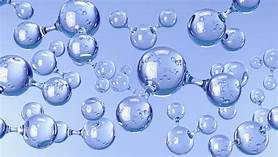Osmosis involves the diffusion of water molecules across a semi-permeable membrane into regions of higher or lower concentrations of solutions (Cath et al., 2006) in order to achieve equilibrium, where the concentrations are the same either side if the membrane. This process is utilised in various ways, from dispersing nutrients around the body to aiding the excretion of metabolic waste and regulating the body’s fluids, these expressing the importance of Osmosis with living organisms as without this vital process, nutrients would not be exploited, and waste products would not be as effectively filtered out of the body.
As already stated, diffusion takes place across a semi-permeable membrane. This membrane is comprised of a phospholipid bilayer, a structure containing two layers of lipid molecules and protein channels (Reece et al., 2017), also known as aquaporins (Rhyne, 2012). These channels are where the majority of diffusion takes place due to fact lipids are predominantly hydrophobic. The water molecules can still diffuse directly across the bilayer however, this takes considerably longer (Goodhead and MacMillan, 2017). The movement of the water molecules relies on the solute concentration either side of the membrane and will most often move from the region of higher water chemical potential to the lower water chemical potential region (Cath et al., 2006). This is because the concentrated solution has fewer water molecules with more solutes, whereas the dilute solution has more water molecules and less solutes (Reece et al., 2017), indicating how the water molecules would be more attracted to the area that is more concentrated due to the lack of current water molecules present. The net movement of the molecules are also influenced by osmotic pressure. Osmotic pressure prevents any further movement of the water molecules across the cell membrane (Reece et al, 2017). The pressure exerted depends on the number of solutes, with the terms osmolality and osmolarity being used to express these (Strange, 2004). The higher the number of solutes, the higher osmotic pressure (Reece et al, 2017). The variation of solutes on either side of the membrane can lead to the solutions being either isotonic, hypotonic or hypertonic. Isotonic solutions are documented when there is the same amount of solvent to solutes on either side of the membrane. Hypotonic solutions have a lower concentration of solutes compared with the opposing solution whereas hypertonic solutions have a higher concentration of solutes compared to the other solution (Kratz, 2010).
Osmosis occurs in numerous places within the mammalian body, most notably, the kidneys. The kidneys have multiple functions, including the maintenance of bodily fluids i.e. regulating the volume and concentration via osmosis and the elimination of nitrogen waste in urine (Aspinall et al., 2009). The constituents of the kidney are nephrons, and within these functional units, the loop of Henle is found. This structure is involved in the regulation of the volume and concentration of urine that is excreted (Aspinall et al., 2009). The loop of Henle consists of two main limbs: the thin descending limb and ascending limb (thick and thin). It is within the thin descending limb where osmosis is most prominent as the osmotic conditions created within the ascending limb draws the water molecules out of the filtrate passing through, causing the osmolality of the filtrate to increase (Kardasz, 2015). The water lost from the filtrate is reabsorbed back into the bloodstream, this being particularly beneficial in cases of dehydration and the conservation of water. However, in cases where an animal is overhydrated, less water will be reabsorbed, leading to more being excreted along with the urine. The ascending loop is responsible for the excretion of Na and Cl via a Na-K pump system, leading to the filtrate within the ascending loop becoming hypotonic as there are more solutes within the interstitial fluid surrounding it. These ions then lead to the development of the osmotic gradient within the interstitial fluid, this being required for the production of concentrated urine (Kardasz, 2015).
To conclude, Osmosis is a vital process to sustain homeostasis within the body. Without this process, the maintenance of bodily fluids would be hindered, cells would burst if water was not able to be released and would eventually lead to death as the body would lack the ability to control the levels of water around the body, especially within the blood.
References.
Cath, T., Childress, A., Elimelech, M. (2006) Forward osmosis: Principles, applications, and recent developments. Journal of Membrane Science. 281(1–2), 70–87.
Golden Rhyne (2012) Cellular Processes in Biology: World Technologies.
Goodhead, L.K., MacMillan, F.M. (2017) Measuring osmosis and hemolysis of red blood cells. Advances in Physiology Education. 41(2), 298–305.
Aspinall, V., Cappello, M., Bowden, S (2009) Introduction to Veterinary Anatomy and Physiology. 2nd ed. Elsevier: London
Kardasz, S (2015) The function of the nephron and the formation of urine. Anaesthesia and Intensive Care medicine. 16 (6), 287-291.
Kratz, R.F. (2010) Biology For Dummies. 2nd ed. Wiley Publishing, Inc: Hoboken
Reece, W., Rowe, E. (2017), Functional Anatomy and Physiology of Domestic Animals. 5th ed. John Wiley and Sons, Inc: Hoboken.
Strange, K. (2004) Cellular volume homeostasis. AJP: Advances in Physiology Education. 28(4), 155–159.

Leave a comment